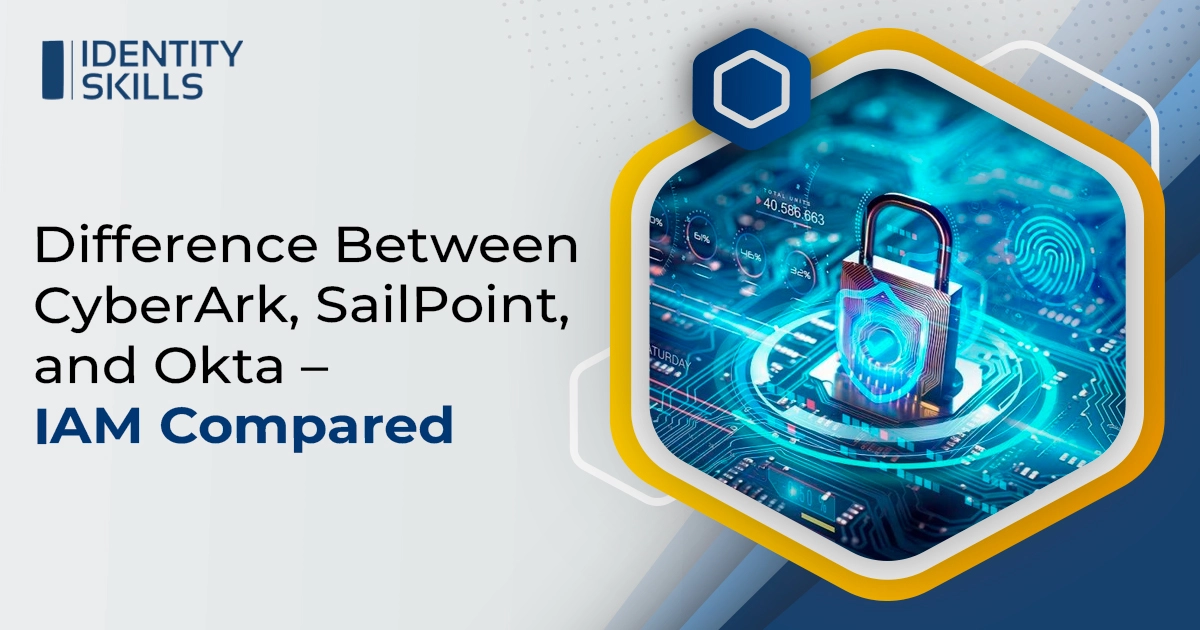If you’ve ever dealt with managing user access across systems, you know it can be a real mess. Too many passwords, unclear permissions, and way too many chances for someone to get into something they shouldn’t.
That’s where Identity and Access Management (IAM) comes in. IAM tools help you control who can access what, when, and how. It’s about keeping your data safe, keeping your users productive, and staying out of compliance nightmares.
Now, when it comes to IAM, three names come up a lot: CyberArk, SailPoint, and Okta. But they’re not all the same. Each of them plays a very different role in the identity world. So let’s break it down—without the marketing fluff.
Meet the Players: CyberArk, SailPoint, and Okta
CyberArk – The Vault Keeper
Think of CyberArk as the tool for locking down your most sensitive accounts. We’re talking admin credentials, root accounts, service accounts—basically, anything a hacker would love to get their hands on.
CyberArk is all about Privileged Access Management (PAM). It doesn’t worry too much about your normal users logging into email—it’s concerned with ensuring the administrator accounts don’t get into the wrong hands.
- Ideal for: Large enterprises with sophisticated IT infrastructures, particularly in finance, healthcare, and government.
- Strengths: Password vaulting, session monitoring, just-in-time access, and compliance features.
- Weaknesses: Configuration and upkeep can be a tad overwhelming for smaller teams.
SailPoint – The Identity Governor
SailPoint is like the brain of identity management. It focuses on Identity Governance—basically, making sure everyone has the right access, no more and no less. It shines in big organizations where access needs change often and compliance is a big deal.
With SailPoint, you can automate who gets access when they join the company, change roles, or leave. It also lets you review access regularly, which auditors love.
- Best for: Large enterprises that need to prove to regulators they’re doing identity management right.
- Strengths: Lifecycle automation, access certifications, and policy enforcement.
- Weaknesses: Has a learning curve and takes time to customize properly.
Okta – The Smooth Operator
If you want to give users easy, secure access to applications without a dozen passwords, Okta is your go-to. It’s best known for SSO (Single Sign-On) and MFA (Multi-Factor Authentication). Okta lives in the cloud, integrates with thousands of apps, and makes life easier for both IT and end users.
It’s especially popular with tech companies, startups, and businesses going fully remote or hybrid.
- Best for: Companies that want fast, reliable user access across apps with minimal IT hassle.
- Strengths: User experience, fast deployment, tons of integrations, excellent APIs.
- Weaknesses: Not built for deep governance or privileged access scenarios.
Quick Comparison Table
| Feature | CyberArk | SailPoint | Okta |
| Main Focus | Privileged Access Management | Identity Governance & IGA | SSO, MFA, Access Management |
| Best For | Securing sensitive accounts | Managing user access lifecycles | Simplifying user login across apps |
| Deployment | Hybrid (on-prem + cloud) | Cloud-first, some on-prem | Cloud-native |
| Strengths | Vaulting, session control | Policy enforcement, lifecycle automation | SSO, MFA, integrations |
| Weaknesses | Complex to manage | Takes time to implement | Limited in governance/PAM |
So, Which One Should You Choose?
Here’s the simple way to look at it:
- Go with CyberArk if your biggest risk is around admin access or infrastructure-level security. It’s a must-have in regulated or high-risk industries.
- Pick SailPoint if your organization is growing fast, dealing with compliance, or struggling to keep access reviews and provisioning under control.
- Choose Okta if your priority is ease of use, secure login, and fast deployment for cloud and SaaS apps.
Final Thoughts
IAM isn’t just about security—it’s about control, productivity, and peace of mind. CyberArk, SailPoint, and Okta each tackle a different piece of the puzzle. The right choice depends on your company’s size, structure, compliance needs, and security risks.
Instead of thinking, “Which one is better?”, ask yourself:
“What problem are we really trying to solve?”
Once you have that answer, the right IAM solution will be much easier to find. Need help figuring out your IAM strategy?
We help businesses of all sizes choose and implement the right identity tools. Get in touch for a consultation—no sales pitch, just real advice.

